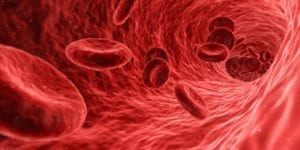Before you read any further, make sure you’ve read Part 1 of our interview, where Anna and I discussed what Wegener’s granulomatosis (GPA) is, her diagnostic journey, and how she managed her first episode.
Completing the Ironman Triathlon
After recovering from her first bout of symptoms, Anna lived fairly “normally” for years. In 2006, she did start to experience some feelings in her legs like she had initially. She visited a dermatologist who provided her with some medicine, but instead of helping her, Anna found herself in severe pain.
When she tried to speak to her doctor, he told her that there was no way that she could feel the pain in her kidneys that she was describing. But Anna knew something wasn’t right. She immediately sought out a kidney doctor who, after seeing her, scheduled her in for kidney biopsy the next day because of how poorly her kidneys were doing. After finding a new doctor to treat her for her Wegener’s, Anna was pulled off her meds; the doctor realized how poorly she was responding.
From this experience, she reminds people to pay attention to the medications they’re put on and the symptoms they’re experiencing, and to advocate for themselves when they feel something is going wrong.
But after this “blip” in time, Anna felt better – and began taking steps to, once again, live her life the way she wanted. In 2008, she completed an Ironman Triathlon in Brazil, and then completed her second Ironman in 2009 in Coeur d’Alene. Her determination sent her through the finish line and solidified, for her, an important message. She shares:
I’m not a runner, biker, or swimmer. I’m not athletic like my friends, but I wanted to see if I could finish an Ironman and in the process find out what I’m made of. I went off-course swimming and had two flats while biking. Then I had changed up my nutrition, which was a stupid mistake, so I was totally dehydrated during my run. I got to the finish line, posed for a finish line picture, asked for medical, and as soon as they had me I collapsed, and then ended up needing 2.5 bags of IV fluids. But I learned that mind over matter is so important and it’s surprising what the mind can get you through.
The Second Go: A Reappearance of Wegener’s Granulomatosis Symptoms
For years, Anna lived without any symptoms or seemingly any issues associated with her condition. But in 2011, she could feel herself getting sick again. She didn’t present with a rash and, at the time, her rheumatologist wasn’t finding anything of concern in her blood tests. Anna explains:
All of my blood tests said I was perfectly healthy. It was frustrating because I wanted to see something in the labs so I didn’t feel crazy. Most people with Wegener’s go through that. I didn’t realize that I should have just gone to the kidney doctor because they can spin your urine, look at the blood cells, and see if they’re dysmorphic. Because at the time, I did have blood in my urine.
Anna’s rheumatologist suggested that she visit the Cleveland Clinic for more assistance. However, Anna delayed the visit, worried that she wouldn’t be presenting with symptoms. By the time she did visit the Cleveland Clinic, she was using pain pills to manage the pain, was extremely fatigued, and had difficulty thinking:
I could either shower, go to the grocery store, or go to Walgreens, and that was it. And if I took a shower during the day, I had to hold onto the walls because I was too weak to stand up by myself. Then after about noon my brain did not really work, I would just lay on the couch waiting for the day to end.
In March 2012, Anna started taking Rituxan. At first, the treatment was magical. Before she started Rituxan, she wasn’t able to walk very far or eat much. Just a week later, she went for a three-mile walk on her favorite trail. Altogether, Anna took four doses of Rituxan over a month before she noticed that it was no longer working for her.
Since Rituxan was not helping Anna reach remission, Dr. Langford from the Cleveland Clinic told Anna that she could begin Cytoxan at a low dose. Instead, Anna explains:
I wanted my life back, so I asked to get a higher dose so I could kick my symptoms like the first time. I got the full 125mg and it hit me like a mack truck for months. At the time, I had just sold a house and was living in this 3rd floor apartment. I couldn’t even get up and down the steps to leave the apartment during the worst month.
In this second round, Anna was sick until 2014. By the time symptoms subsided, she was taking daily pain pills alongside Lyrica for her neuropathy. But with Western medicine doing all that it could do, Anna decided to try a new route: holistic care. The holistic treatments eased the pain and most of the neuropathy and enabled her to stop using both the Lyrica and the pain pills within a month of starting. Anna also did food sensitivity testing which showed that she had issues with chicken, so she eliminated that from her diet, as well as went gluten-free to help residual neuropathy. This was all done to ensure that her body was at its strongest and to reduce any additional inflammation that could cause a flare.
Since then, Anna has been managing her condition using Rituxan as a preventative measure.
Join us in Part 3 to learn more about beginning a relationship with a rare condition, the importance of self-advocacy, and Anna’s dreams of writing a book about her Wegener’s granulomatosis.








